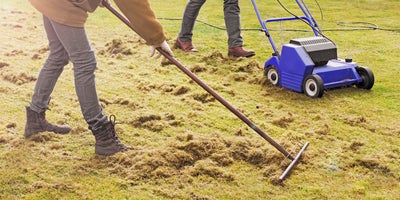September scarifying

As the summer season draws to a close and the cooler autumn air starts to roll in, now is a great time to start thinking about lawn care. Specifically, it's the best time to start scarifying your lawn. Scarifying, also known as dethatching, is an important step in maintaining a healthy and vibrant lawn. It involves removing the layer of dead grass and other debris that accumulates on the surface, allowing more air and nutrients to reach the roots of the grass. Doing it in early autumn helps give the grass one last bit of care before the winter moves in, and helps it to look its best the following year.
Shop the Range
![September_scarifying_]Why_autumn_is_the_ideal_time.jpg](https://eu-images.contentstack.com/v3/assets/blt066259863543a0d2/blt479b55b80ae37662/6419b49421ef0024491bbc11/September_scarifying_]Why_autumn_is_the_ideal_time.jpg?format=pjpg&auto=webp&dpr=1&width=400&crop=2:1&quality=85)





